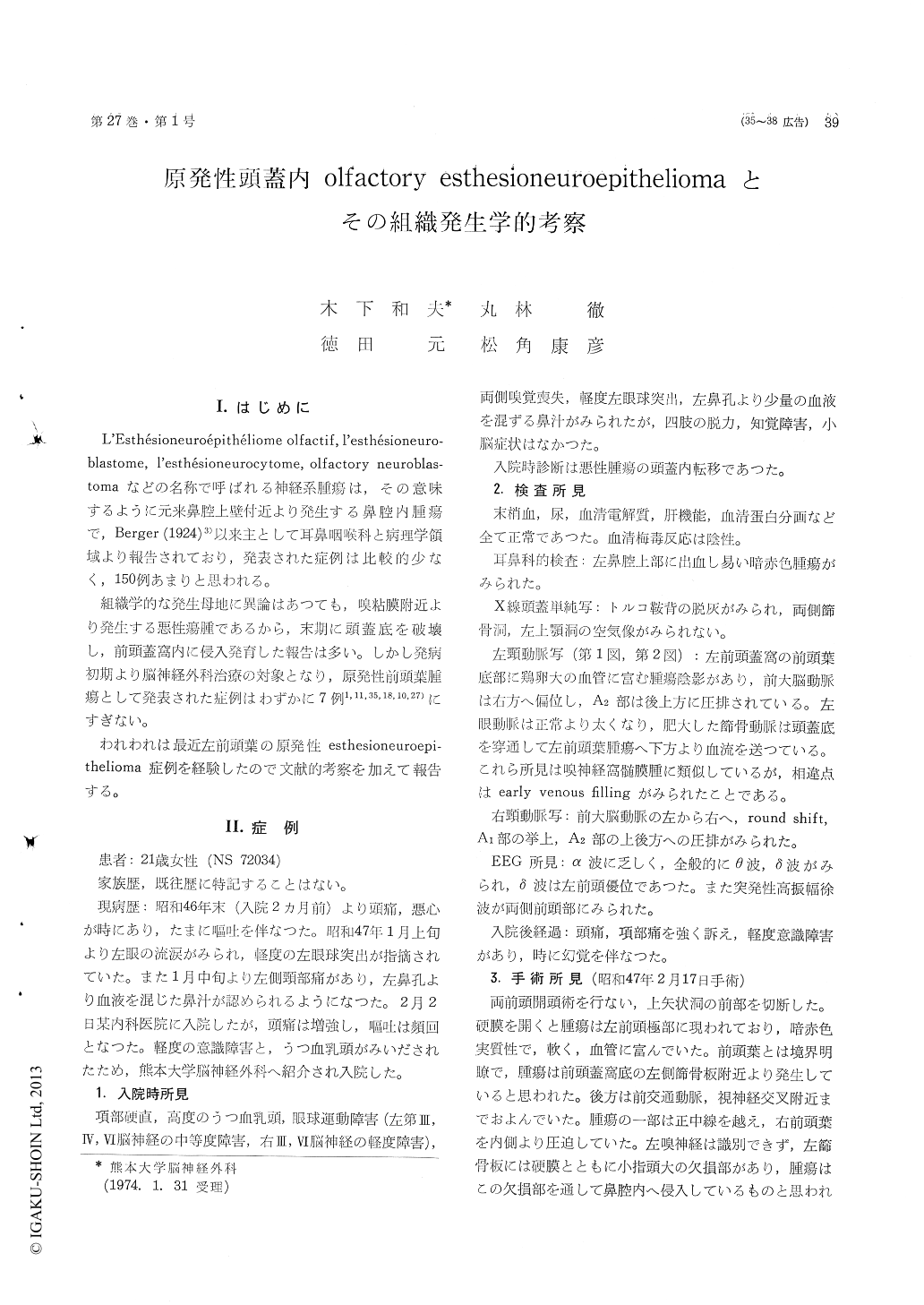Japanese
English
- 有料閲覧
- Abstract 文献概要
- 1ページ目 Look Inside
I.はじめに
L'Esthésioneuroépithéliome olfactif,l'esthésioneuro—blastome,l'esthésioneurocytome,olfactory neuroblas—tomaなどの名称で呼ばれる神経系腫瘍は,その意味するように元来鼻腔上壁付近より発生する鼻腔内腫瘍で,Berger (1924)3)以来主として耳鼻咽喉科と病理学領域より報告されており,発表された症例は比較的少なく,150例あまりと思われる。
組織学的な発生母地に異論はあつても,嗅粘膜附近より発生する悪性瘍腫であるから,末期に頭蓋底を破壊し,前頭蓋窩内に侵入発育した報告は多い。しかし発病初期より脳神経外科治療の対象となり,原発性前頭葉腫瘍として発表された症例はわずかに7例1,11,35,18,10,27)にすぎない。
The olfactory esthesioneuroepithelioma or olfac-tory neuroblastoma is uncommon but generaryknown as one of the malignant tumors originatingfrom the olfactory epithelium.
In rare cases the tumors destruct the base of theskull and grow intracranially presenting the symp-toms of the intracranial tumors. Seven such rarecases have been reported in the literature.
We reported the eighth case of the primaryintracranial olfactory esthesioneuroepithelioma.
The patient was a 20-year-old woman who wasadmitted to Kumamoto University Hospital with a2 months' history of headache, nausea and vomit-ing. On admission neurological examination re-vealed bilateral papilledema, a slight left exophthal-mos and a mass in the left nasal cavity withminimally bloody nasal discharge. A carotid angio-graphy showed a large vascular tumor in the leftfrontal lobe.
At surgery a tumor weighing 50 grams was foundin the base of the left frontal lobe and extendedinto the nasal cavity through a small hole in thecribriform plate. The intracranial portion of thetumor was totally removed. The patient receiveda course of the radiation therapy and is doing verywell 2 years after the surgery.
Histologically this tumor had the two basicpatterns. One consisted of sheets of small roundor oval cells without any architetural patterns.The cytoplasm was scanty and the cell borderswere indistinct. The mitotic figures were abundant.The other was the presence of the tubular struc-tures similar to those of the retinoblastoma andthe primitive neural tube.
Electron microscopic study showed the featuressimilar to those of the immature reuroectodermaltissue such as the primitive neural tube and theprimitive forms of the retinoblastomas and neuro-blastomas but failed to show any mature forms ofcells consisting of the olfactory epithelium.
It should be concluded that the tumor of thiscase originated from the neuroectodermal cells inthe olfactory epithelium.

Copyright © 1975, Igaku-Shoin Ltd. All rights reserved.


